520,000 Cruise Ship Passengers in Dubrovnik Expected this Season
April 7, 2022 - Blaž Pezo of the Dubrovnik Port Authority announced 345 ship arrivals and about 520,000 cruise ship passengers in Dubrovnik this season.
When measures were relaxed in mid-May 2021, the conditions for restarting cruising tourism in the destination were finally met, taking into account the reduced covid-capacity of 60 percent of passengers. The Dubrovnik Port Authority was happy to welcome the tourism market, and as the season progressed, many cruisers came. In the end, the director of the Dubrovnik Port Authority Blaž Pezo said they ended 2021 with traffic above expectations, reports DuList.
Last year, he stressed, a solid cruise season was achieved in which they were visited by 139 ships and 110,130 passengers. Given that there were none in 2020, Pezo said that the Port Authority is satisfied with the 2021 result, which is 30 percent of 2019 and is a good base for this season which they expect 70 percent of 2019.
"We are optimistic about the 2022 season. According to current announcements, in 2022, we expect 345 ship arrivals and about 520 thousand passengers, which is fully in line with the plans for sustainable tourism development in the destination. The maximum number of passengers from cruise ships in Dubrovnik throughout 2022 is 4,000 passengers at a time or an average of two ships at berth. The Dubrovnik Port Authority is actively participating in the City of Dubrovnik project ‘Respect the City’, in which we strive to ensure the sustainability of Dubrovnik tourism. As part of the project activities, the Ordinance on conditions and criteria for accepting and allocating berths for cruise ships in sustainable destination development was developed. As a result, an even better schedule of cruise ship arrivals in Dubrovnik was achieved, which will result in a more even flow of passengers from the port, mostly towards the historic core, and thus reduce the intensity of the load on city roads in the direction Gruž - Pile - Gruž," said Blaž Pezo for Dulist.
How does the situation with Ukraine reflect on the announcements for the cruising season, and are specific markets disrupted?
"In recent days, information has appeared in the public that the war in Ukraine has begun to affect cruising tourism. Some cruisers have canceled their visit to Dubrovnik, but the situation is not dramatic. So far, we have only two cancellations due to operational reasons and several changes in the entry schedule into Dubrovnik due to the relaxation of measures in Italy. I would not say that the situation is alarming, but we monitor the situation together. In the announcement for this year, which should be very good after the coronavirus pandemic, we have 345 ships.
Of course, there is a possibility some will cancel, but we hope that will not happen. It is unknown how many passengers the cruisers could bring to Dubrovnik, as the number is changing, but they are currently between 60 and 70 percent full. Given the much more favorable situation with the coronavirus pandemic, we expect that European and American shipping companies will gradually increase their cruiser capacity this season. With the improving situation, the greatest demand, i.e., the most serious number of tickets and passengers on cruises, is expected from the major tourist markets from Great Britain and the USA, Germany, France, Italy, and Spain," concluded Blaž Pezo.
For more, check out our travel section.
Turkish Airlines Istanbul-Zagreb Flights Daily, Regular Dubrovnik Flights from April 6
April 5, 2022 - The latest flight news to Croatia as Turkish Airlines Istanbul-Zagreb flights have been running daily since April 1, and three-weekly Dubrovnik flights begin from April 6.
The Turkish national airline and Star Alliance member Turkish Airlines has been operating twice a day between Istanbul and Zagreb since the beginning of April and announced three-weekly flights to Dubrovnik, reports Croatian Aviation.
Turkish Airlines has been operating daily between Zagreb and Istanbul since April 1, bringing the number of weekly rotations back to pre-global pandemic levels. Two flights a day run every day of the week, departing from Zagreb in the morning and evening, thus providing several transfer options through its own hub in Istanbul.
On the route to and from Zagreb, Turkish Airlines uses several types of narrow-body aircraft in April, such as A320, A321, B737-800, B737-900ER, and B737-MAX8, and a total of 21,024 seats are available in both directions in April, with the share of Business Class seats also significant.
From April 6, Turkish Airlines will also operate regularly on the route between Dubrovnik and Istanbul. Three flights a week have been announced, on Mondays, Wednesdays, and Saturdays, and A319, A321 and B737-800 aircraft will operate to Dubrovnik Airport.
In April, 4,246 seats were available between Istanbul and Dubrovnik. It's interesting to note that Dubrovnik recorded 25,645 passengers in March, while in the same month last year there were only 5,069 passengers. Several airlines returned to Dubrovnik on the last weekend of March, and domestic routes, as well as Freebird charter routes, were in traffic for the whole month. In the first three months of this year, Dubrovnik recorded 44,207 passengers, while in the same period in 2021 there were 12,346.
In April this year, Turkish Airlines announced a total of 73 return flights to Zagreb and Istanbul and a total of 25,270 seats available on the market. The number of seats will increase in the coming months when Turkish should increase the number of rotations to Dubrovnik and capacity to Zagreb.
Recall, we recently reported that the 2022 Zagreb summer flight schedule offers 3 million seats on 20 well-known European and international airlines.
For more, check out our travel section.
About 'Work.Place.Culture.' in Dubrovnik 5-7 May, Early Bird Closes Tonight at Midnight
April 4, 2022 - Ahead of the upcoming Work.Place.Culture conference in Dubrovnik, organizer Tanja Polegubić of Saltwater Nomads shares more details about an event that continues to establish the Pearl of the Adriatic as a mecca for remote work. The sale of early bird tickets ends today at midnight.
All nomadic roads lead to Dubrovnik, and you are embarking on your third event in the Pearl of the Adriatic, after Croatia's first-ever nomad conference in October 2020, and the award-winning Dubrovnik Nomads-in-Residence program. Before we get to the event, why Dubrovnik (which was not a perceived nomad destination), and why do you keep coming back?
There’s an Instagram video by Goran Visnjic which shows exactly why I keep coming back - I even drive around twice, for double the thrill.
Like everything, the people. It’s so easy to work with the Tourist Board and City; this can be rare in Croatia. Also - the vision to shift from over-tourism. I freely admit I avoided the city in the peak of summer, and this is part of multiple steps to address this for future generations. I’m really fortunate that I can say I played a small part in the reinvention story of such an iconic destination, as it builds in sustainable measures in tourism. Also, see video above.
Defining tangible results in a sector where little data is collected (nobody registers as a digital nomad) are hard to quantify. That there has been a perception change about Dubrovnik is evident when comparing British media stories from 2017 (The Times using Dubrovnik as a poster child for overtourism v. The Guardian in 2021 with a Dubrovnik leading image for a feature on digital nomad visas). How else do you quantify progress?
In the original pitch to the city, there was a quote from a 2017 NomadList user saying “nice place to visit, but only for a few days” with very little mention of Dubrovnik - this review was in 2020. Fast forward to 5 years now, and for example, a Dubrovnik Digital Nomads Dubrovnik Facebook group I started nears 700 members. And we know the average number of monthly digital nomads in Dubrovnik, according to Nomad List, is several hundred - and all the graphs for Croatia have a steep upward trajectory. Following this, the way to see the rise will be in long-stay occupancy and related businesses remaining open.
Your last event in the city a year ago, Dubrovnik Nomads-in-Residence, has already picked up a couple of international awards. Tell us a little about the impact that it has had on the city's thinking and strategy.
The Dubrovnik Digital Nomads-in-Residence program really highlighted the areas to focus on, and the City and Tourist Board are implementing these with ‘quick wins’ and longer-term goals. The workation and conference were part of those recommendations - the momentum is strong, and it’s a strategic approach.
And so to 2022. Saltwater Nomads is teaming up once again with Dubrovnik for another innovative conference called Work. Place. Culture. Tell us about the conference and what it is trying to achieve.
Following the work from home shift arising from global lockdowns, the greatest shift right now is the return to the office for millions of people - so, what does something like hybrid look like? If you don’t want to go to a physical office again - how do you champion this change internally, or as it has been popularly coined, do you join ‘The Great Resignation’? This conference brings this thinking - and leaders in their field with very close insights to share this information. It also allows destinations to open up their doors to raise awareness to the ready-to-work-from-anywhere crowd, while also learning about expectations and shaping their thinking as they craft a revamped offer- with so many countries now offering a digital nomad visa, having a digital nomad offer for tourism is going to be part of the furniture. As the name implies, it brings together work and place - with aspects of culture for both.
Who is it aimed at, and why should they come?
Those in the HR or remote space. Especially anyone interested in the latest data and trends. It’s a very interactive program design, including netwalking on the Old Town walls as part of the program, and several outdoor sessions - from nature park islands to medieval replica sailing ships. Also, any digital nomads in Croatia who ultimately want to visit Dubrovnik - this is a great opportunity to explore the city in great company, and also - anyone considering a workation.
The speakers list is being finalised, but can you give us a teaser?
We’ve now started sharing who is joining us, and we have some real ‘heavyweights’. Aaron McEwan, who was recently interviewed by TCN, will cover Radical Flexibility. We have 3 of LinkedIn’s Top 10 voices in Remote Work coming in person. Plus digital nomads and some exciting stories from destinations, which we’ll also share in coming weeks.
As one of the pioneers of the cowork revolution in Croatia, co-organiser of the Dubrovnik events, Zagreb Digital Nomad Week, and co-founder of the Digital Nomad Association Croatia, you seem to be at the heart of many of the remote work initiatives driving Croatia forward. How do you see progress, and what are the key things missing which would help accelerate Croatia's path to become a major player in this exciting sector in the future?
Our DNA Croatia Reflection Day was a really positive way to start the year, to look back but also forward - and the uptake from all regions of Croatia is a sign of momentum and strength.
I would say budget - financial investment, is missing. When you look at places like Lisbon paying Web Summit $10million a year, per year, for a decade, you realise just how different a playing field we’re on. What we’ve done is remarkable, and the destinations are attractive - there’s not much effort needed to convince people to come- but I can only imagine what could be achieved, and also we know the numbers and average spend of nomads, so there is a case to increase investment in this area. Read: public support is missing in most places. Hopefully, this changes.
Early Bird tickets are available until today at midnight and can be booked via the official website.
You can download the full programme of the Work.Place.Culture Conference in Dubrovnik here.
Work. Place. Culture. is a collaboration between the City of Dubrovnik, Dubrovnik Tourist Board, Saltwater Nomads and TCN, with support from the Digital Nomad Association Croatia and Dubrovacka Bastina. Zagreb Digital Nomad Week is a partnership between Zagreb Tourist Board, Saltwater Nomads, and TCN.
To learn more about magnificent Dubrovnik, check out the Total Croatia Dubrovnik in a Page guide, in partnership with Sun Gardens Dubrovnik.
For more news and features on digital nomads in Croatia, follow the dedicated TCN section.
26th Anniversary of Death of US Secretary of Commerce Ron Brown Commemorated
ZAGREB, 3 April 2022 - A memorial ceremony was held in Dubrovnik on Sunday to commemorate the 26th anniversary of a plane crash, in which a US business delegation led by Secretary of Commerce Ronald Brown was killed.
The US Undersecretary of Commerce for International Trade, Marisa Lago, said that mourning continued for the 35 people tragically killed while working for peace and prosperity in the war-torn region.
The then US President Bill Clinton described the mission led by Ron Brown as "a mission of peace and hope", she recalled. "How pleased the members of the mission would be today with us in Dubrovnik, Croatia, a NATO ally, an EU member and a regional economic success story", she added.
Lago said she was confident that Secretary Brown and the people he led would not shrink back from the challenges of today and would share her conviction that through partnership and cooperation we can persevere together in the search for peace, prosperity and security.
The ceremony was attended by Dubrovnik-Neretva County Prefect Nikola Dobroslavić, Dubrovnik Mayor Mato Franković, Dubrovnik Airport Director Ivan Maslać, US Chargé d'Affaires Mark Fleming, Colonel Darko Arapović on behalf of the Defence Ministry and local government officials.
The participants in the commemoration ceremony signed the book of condolence at the Ronald Brown Memorial House.
A US military aircraft carrying Secretary of Commerce Ronald Brown and 34 other persons crashed in a storm near Dubrovnik's Čilipi Airport on 3 April 1996. All passengers were killed, including two Croatian nationals. The US delegation was travelling to Dubrovnik to meet with Croatian officials.
For more, check out our dedicated lifestyle section.
Tegeltija: Why Would Trebinje Airport Be a Problem to Dubrovnik?
ZAGREB, 2 April 2022 - The Chairman of Bosnia and Herzegovina's Council of Ministers, Zoran Tegeltija, said on Saturday it was not clear to him why anyone in Dubrovnik and Croatia would be against the construction of an airport at Trebinje, noting that everyone would benefit from the project.
Tegeltija confirmed to the local media that he had received a letter from Dubrovnik Mayor Mate Franković requesting that all preparations for the construction of the Trebinje airport be suspended until the possible impact of the project on the environment, including the River Ombla, was assessed.
In his letter, Franković reminded Tegeltija that Bosnia and Herzegovina, just like Croatia and Serbia as a potential investor, was a signatory to the Convention on Environmental Impact Assessment in a Transboundary Context and that the airport construction should be suspended until it was confirmed that there would be no risk to the source of the River Ombla, which is situated only eight kilometres from the planned construction site.
The airport would be built in highly porous karst terrain.
Tegeltija said he was ready to discuss all unresolved issues with the Croatian government, including its plan to build a nuclear waste facility on Mount Trgovska Gora at Dvor na Uni, near the Bosnian border.
"I do not understand why the mayor of Dubrovnik is not happy about the construction of the airport at Trebinje, given its economic importance not just for Trebinje, but for the whole of Republika Srpska and Bosnia and Herzegovina," Tegeltija said, avoiding a comment on Dubrovnik's concern about the possible pollution of the Ombla.
Trebinje Mayor Mirko Ćuk said that Franković should not be interfering in this project. "I am in favour of all conditions being met, but without political interference. It is superfluous to comment on the claim that the construction of the Trebinje airport will affect the source of the river."
Earlier this week, the Council of Ministers formulated a proposal to open talks with Serbia on a memorandum of understanding for the construction of an airport at Trebinje. The opening of talks requires the approval of the Presidency of Bosnia and Herzegovina.
The idea to build the Trebine airport was first floated two years ago by Serbian President Aleksandar Vučić, who said that the project was important for connecting Eastern Herzegovina to Serbia and the region and that it would be fully financed by Belgrade.
The airport would serve a town of barely 30,000 inhabitants and would be situated in a sparsely populated region. There are already three airports within a 50-km radius of Trebinje -- at Mostar, Dubrovnik and Tivat.
For more, check out our business section.
Dubrovnik Mayor Asks Bosnia Government to Halt Construction of Trebinje Airport
ZAGREB, 2 April 2022 - Dubrovnik Mayor Mato Franković has sent a request to Bosnia and Herzegovina's Council of Ministers to halt the construction of the airport in the town of Trebinje, southern Bosnia and Herzegovina, until the impact of the project on the source of the River Ombla is assessed.
The road distance between Dubrovnik and Trebinje is roughly 30 kilometres.
The mayor sent the request to the chairman of the Bosnia and Herzegovina's ministerial council, Zoran Tegeltija, on Friday following the adoption of a memorandum by Bosnia's Council of Ministers and the government of Serbia on the future cooperation with the aim of implementing the project of Trebinje Airport.
Franković recalls that apart from Croatia, Bosnia and Herzegovina and Serbia are also signatories to the Convention on Environmental Impact Assessment in a Transboundary Context (informally called the Espoo Convention).
The document is a United Nations Economic Commission for Europe (UNECE) convention signed in Espoo, Finland, in 1991 that entered into force in 1997.
The Convention sets out the obligations of Parties—that is States that have agreed to be bound by the Convention—to carry out an environmental impact assessment of certain activities at an early stage of planning. It also lays down the general obligation of States to notify and consult each other on all major projects under consideration that are likely to have a significant adverse environmental impact across boundaries.
Franković says that the construction of airports is covered by the convention whereby the signatories are obliged to apply the principles and provisions of ESPO as well as of the Protocol on Strategic Environmental Assessment (SEA).
"Therefore we express dissatisfaction with the current course of action and with the absence of initiative for dialogue...concerning this environmentally important issue," writes the mayor of the southernmost Croatian city.
Dubrovnik insists on the immediate suspension of the project until all the fulfillment of the requirements under the ESPO convention and SEA protocol.
According to the available information, the future airport should be situated in a Karst area and on soil permeable to water in the Talež settlement in the Serb entity of Bosnia and Herzegovina, just eight kilometres of the source of the River Ombla.
For more, check out our business section.
Destination Dubrovnik: Top 100 Global HR Influencer Aaron McEwan on Future of Work
April 2, 2022 - With just over a month to go until the innovative Work. Place. Culture. remote work conference in Dubrovnik, TCN continues its look at the list of high-class international speakers who will be sharing their wisdom in the Pearl of the Adriatic. Next up, a real heavyweight in the remote work world, Aaron McEwan from Australia.
For a country where change is traditionally quite slow and bureaucratic, Dubrovnik's digital nomad journey has been nothing short of breathtaking. It is not even two years since we first pitched the concept of digital nomads to a very receptive Dubrovnik Mayor, Mato Frankovic. Work started the next day, followed by Croatia's first-ever digital nomad conference in October 2020, and the award-winning Dubrovnik Nomads-in-Residence program the following April.
And now this. To have speakers of the calibre of Aaron McKewan addressing the latest Dubrovnik remote work conference, Work. Place. Culture. (a collaboration between the City of Dubrovnik, Dubrovnik Tourist Board, Saltwater Nomads, and TCN) is a sign of just how far Dubrovnik has come in its journey and standing.
Aaron certainly knows his stuff. As VP, Research & Advisory for Gartner’s HR Practice for Gartner a $4.1 billion company and member of the S&P 500, he provides strategic advice to some of the biggest companies on the planet about the future of work. Recently named as a Top 100 Global HR Influencer and one of 5 HR Leaders to Follow in 2022, Aaron is clearly a voice worth listening to on the subject of the future of work.
That voice will be addressing Dubrovnik at the WPC conference from May 5-7. Aaron kindly found some time to answer some questions ahead of the conference:
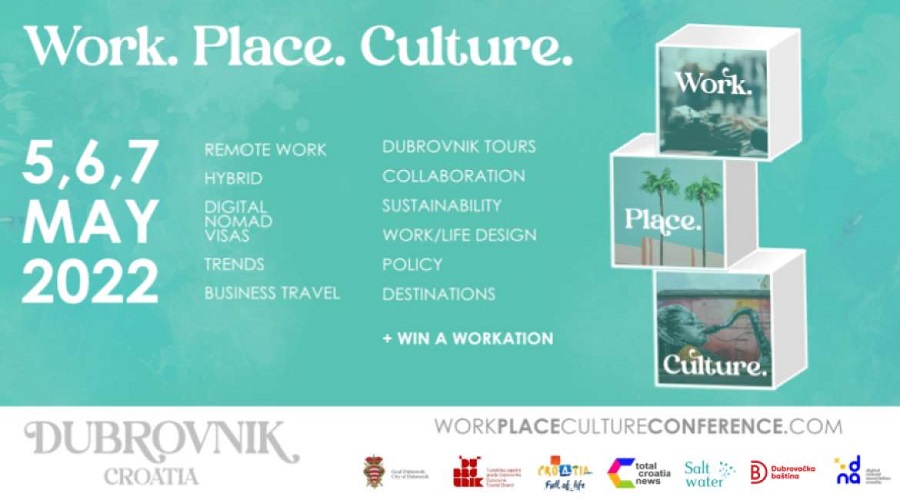
1. With the radical changes to the workplace in the last two years, the relationship between employee and employer is changing. How would you characterise that change, and how do you expect that relationship to develop?
Historically, pandemics have reshaped society, not just work. So I think we are seeing people’s relationship to work changing in very fundamental ways. For example 65% of employees globally told us that the pandemic made them rethink the place that work should have in their life. Employees today don't want to be seen as workers, they want to be seen as human beings. They want much more autonomy over not just where they work, but how they work, who they work with, what they work on.

2. We also hear a lot about talent shortage in this new and flexible reality. What strategies are companies employing to successfully entice the best talent to work for them?
The most obvious is what we call radical flexibility, where companies are offering things like round the world plane tickets and encouraging employees to work from wherever suits them. But we are also seeing the rise of compressed work hours like four day weeks, cooking and gardening lessons, child care support, access to personal career and life coaches, opportunities to learn new languages and instruments. The common thread is that it’s about giving employees more flexibility, more autonomy and helping them to be healthier and better people, not just workers.
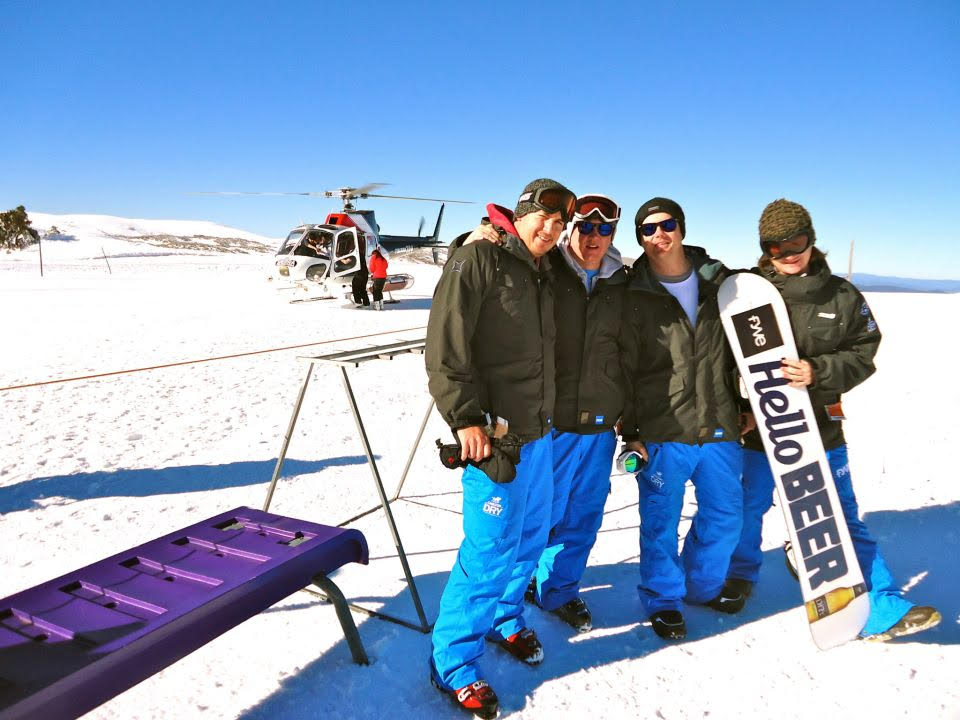
3. As As VP, Research & Advisory for Gartner’s HR Practice and a Top 100 Global HR Influencer and one of 5 HR Leaders to Follow in 2022, you are at the cutting edge of the discussion. How willing are you finding global companies are to completely reinvent their modus operandi to meet the new reality?
Unfortunately it’s still the exception, not the norm. Many executives want a return to the status quo where everyone works out of an office. These leaders simply aren’t grasping the seismic changes that are underway and the incredible opportunity that they have to attract and engage the best and brightest talent in the world. Those companies that push for a return to the old ways of working will find themselves on the wrong side of history and will likely face a “Kodak” moment that threatens their very existence.
4. The freedom of working from anywhere versus the human contact with colleagues in the office. What are the best strategies companies are implementing to balance this?
This is where hybrid approaches are so important. Companies that get this right, match the work that needs to be done to the time and location that best suits that particular task or activity. They encourage collaboration in multiple settings to drive innovation. Some synchronous activities like brain storming, creative problem solving might work better when you bring people together in the office (though virtual collaboration is also very effective and much more time and cost efficient). Bonding and connection might be better done in a more social setting like a bar or restaurant or an engaging natural environment like the beach or forest. Asynchronous tasks that require deep thought, concentration, attention to detail, etc. like writing and designing might be better done alone in a quiet environment like a home office. In fact it turns out that asynchronous work accounts for about 49% of team innovation.
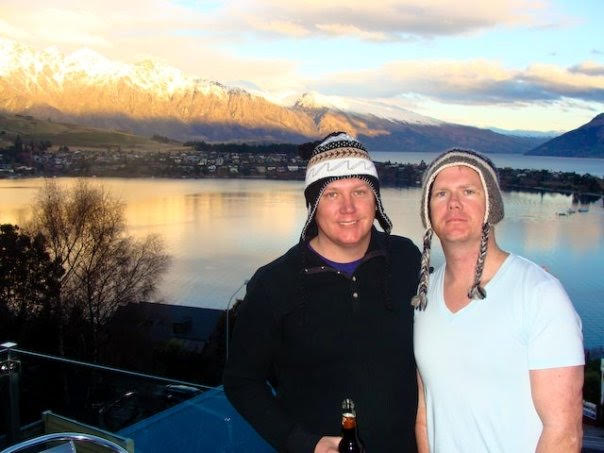
5. Destinations and countries have an opportunity to attract remote workers in this new reality. What innovative concepts are you seeing in this regard? And what could countries such as Croatia do to make it more attractive, in addition to the introduction of the digital nomad permit?
Yes, as the pandemic subsides people’s desire for adventure and travel will continue to rise. As with any product or service, you need to make the product attractive so countries like Croatia have much to offer – history, natural beauty, friendly people, etc. But the real secret to attracting and retaining customers is in personalizing the experience and reducing the effort that the customer needs to put in. A digital nomad passport is a great start because it means you don’t need to deal with immigration or change jobs every three months to meet the conditions of a working holiday visa. But the real opportunity lies in understanding the various personas of those who want to work differently so that you can deliver a personalized experience and remove the barriers to making that experience not just memorable but effortless. For example, what type of experience would a young single woman want to have vs. an older male with a partner and children? What about someone with a disability or mobility issues, neurodiversity? LGBTI? What about someone with lots of disposable income vs. those on a tight budget? Some might want to travel extensively and move around. Others may wish to “live” in a location and immerse themselves like a local. How do you make those different experiences possible? And how do you make the whole thing effortless? Simplify your tax and immigration laws, invest in infrastructure and public transport, provide cheap, high speed internet everywhere, embrace the sharing economy, invest in great schools and centers of learning, facilitate communities that offer advice, support and guidance.
6. There has been a considerable brain drain and emigration from countries such as Croatia in recent years in search of better economic opportunity. Do you sense that the flexibility of the new reality may reverse that trend, and are you seeing any examples of that?
Yes, as the adoption of hybrid and remote work gathers pace, we are seeing people move out of the large cities, particularly those with very high real estate prices, to less expensive and more “livable” coastal and regional locations. So smaller cities that have accessible beaches and reasonable housing costs that also offer decent infrastructure and thriving cultural precincts are becoming increasingly popular places to live whilst working remotely.

7. Your three best pieces of advice for a company looking to attract the best talent?
Treat employees like humans, embrace radical flexibility and offer meaningful and impactful work that they can be proud of.
8. And so to the Dubrovnik Work. Place. Culture. conference. Why does it appeal to you, what will you be speaking about, and what do you hope to get from your time in Dubrovnik?
Despite having a young family now and permanent roots in Australia, I’m still a digital nomad at heart. I love travel, I love adventure and I love the experience of living in foreign cities. I also cherish any opportunity to humanize work and inspire people to seize control of their own careers.
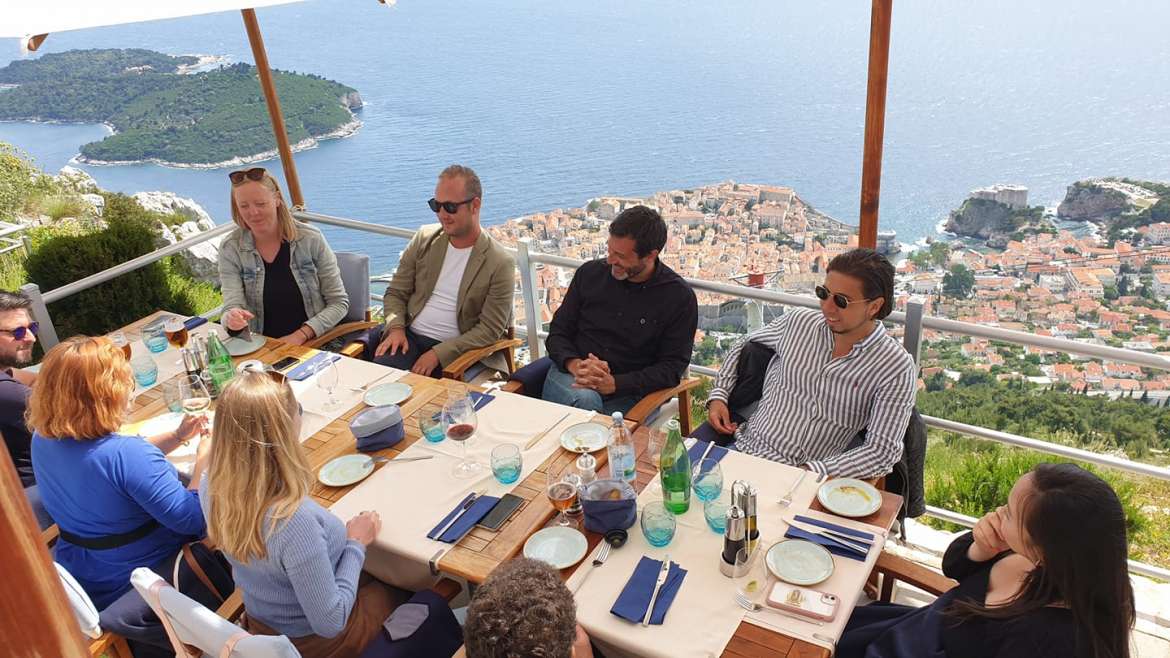
9. You obviously follow global trends in remote work. How do you assess Croatia's efforts so far, and what does it need to do to move things forward?
Croatia was a digital nomad first mover and it’s a gorgeous and great place to work. Future success will be about broadening the current definition of a digital nomad so it appeals to a broader market of adventure and hungry knowledge workers and to make it an effortless place to live and work.
About Aaron McEwan:
Aaron McEwan is a behavioral scientist, psychologist and futurist and was recently named a Top 100 Global HR Influencer and one of 5 HR Leaders to Follow in 2022. As VP, Research & Advisory for Gartner’s HR Practice, Aaron provides strategic advice to the world’s leading companies on the future of work and talent and helps leaders manage their most critical relationships across the c-suite and board. Alongside his current role, Aaron is a Fellow of the Australian Human Resources Institute, serves on the national committee for the Australian Psychological Society’s Interest Group in Coaching Psychology and is an Associate of Macquarie University’s Centre for Workforce Futures. He has lectured at Sydney Business School, University of Wollongong, University of NSW, University of Queensland, Griffith University and the Australian College of Applied Psychology and was a member of Innovation Nation, a cross-industry initiative sponsored by the Office of the Prime Minister to elevate Australia’s reputation for entrepreneurship and innovation.
You can follow Aaron McKewan on LinkedIn.
To learn more about the services of Gartner, visit the official website.
For more information about the Work. Place. Culture. conference in Dubrovnik from May 5-7, check out the event website to reserve your ticket.
For more news and features about digital nomads in Croatia, follow the dedicated TCN section.
Beyond the Dubrovnik Walls: 1. Island of Kolocep (Kalamota)
April 1, 2022 - Dubrovnik is perceived to be a 2-day destination with everything concentrated inside the UNESCO old town, but it is so much more than that. Find out what, in the first of a new TCN series - Beyond the Dubrovnik Walls. Meet the island of Kolocep, also known as Kalamota.
Seeing things with a fresh pair of eyes is always instructive. Almost a year ago, at the conclusion of the Dubrovnik Nomads-in-Residence programme, A Dutch digital nomad gave an initial presentation to the mayor, tourist board, media and public on his group's findings after 4 weeks as guests of the city. Their brief was to look at Dubrovnik through the eyes of digital nomads and to work with Dubrovnik to create an effective strategy for future development. His presentation was simple, concise, in many ways obvious, and made the whole room pause to think.
His first slide showed the first 30 images on Google Images of Dubrovnik, and they all showed the same thing - the stunning UNESCO World Heritage Site that is the old town of Dubrovnik. One nomad commented that prior to coming to the city, he was not even sure if Dubrovnik had anything of interest or substance beyond the walls. The perception that Dubrovnik was a 2-3 day destination is one that changed during his stay of four weeks, and he announced that after almost a month, he was still not ready to go home.
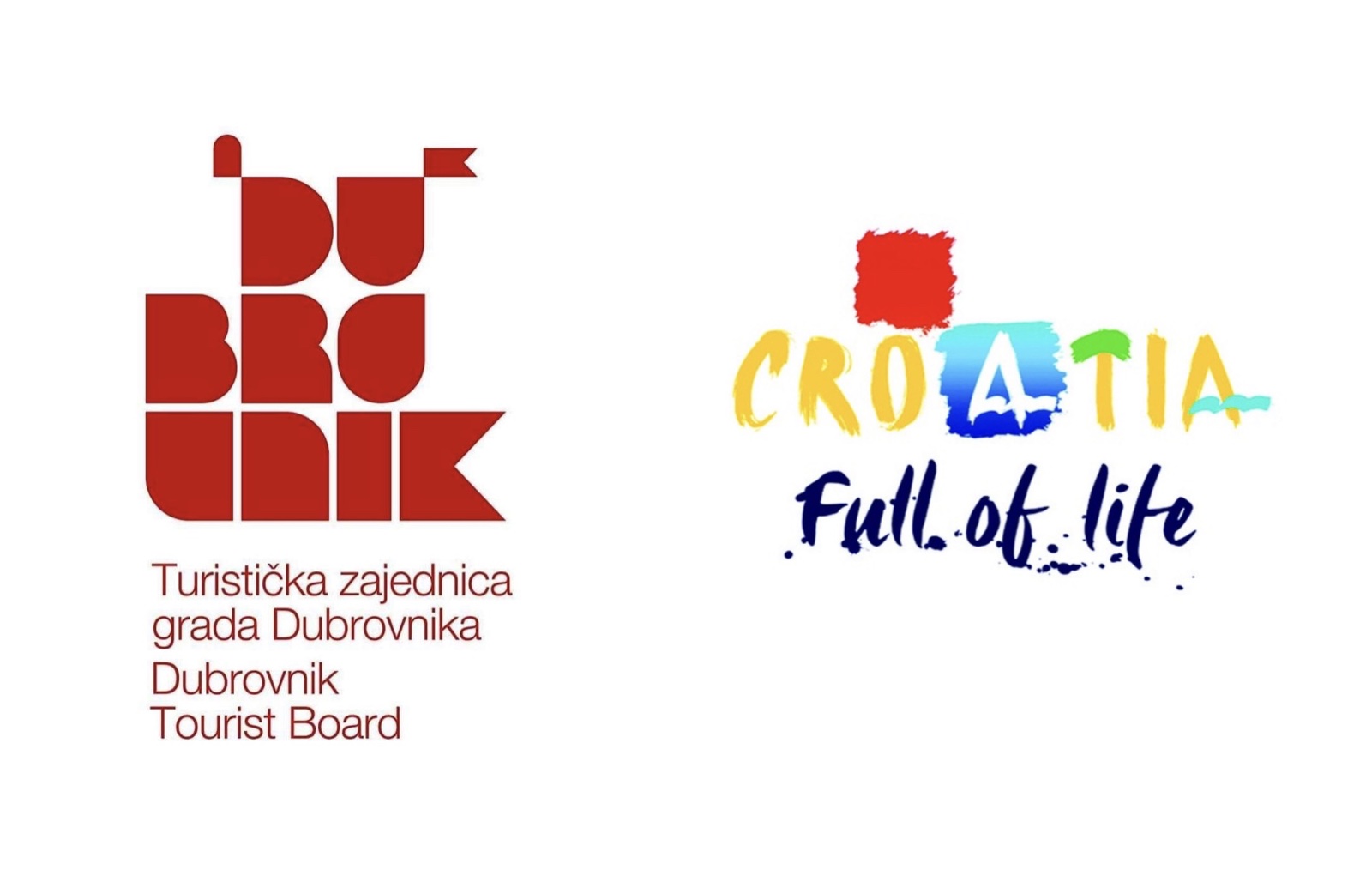
The magic of Dubrovnik for all these nomads was not the gorgeous old town, stunning as it undoubtedly was, but what lay beyond the walls - the rest of living, breathing Dubrovnik and its surrounding area. In some ways it was an obvious point, but taking the focus away from the old town seems somehow innovative. And having thought about it, the perception of the reality of Dubrovnik as a destination can only change if we show Dubrovnik, the reality, rather than Dubrovnik, the Instagram poster child.
Welcome to Dubrovnik Beyond the Walls, a new TCN series showcasing the magic of this incredible city, but away from its photogenic famous old town. There you can take in centuries of history, culture and tradition, but if you take a bus, boat, or short walk, there are many other Dubrovnik experiences to be enjoyed which complement the famous main attraction.
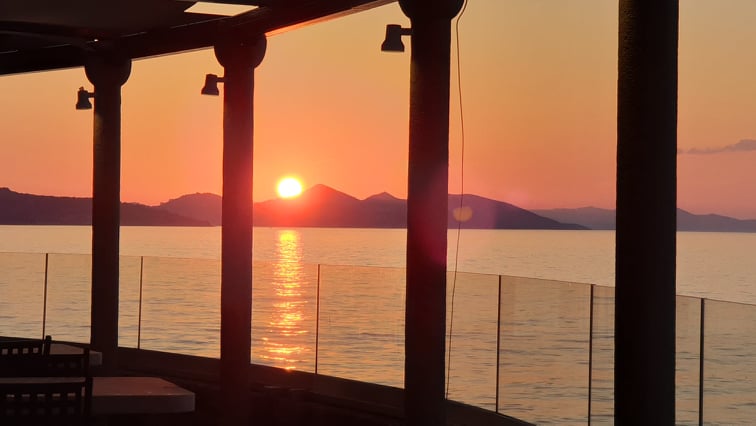
Places like Kalamota, as locals call the island of Kolocep, the closest of the three Elaphite islands. I discovered the three jewels of Kalamota, Lopud and Sipan quite late in life, having heard so many wax lyrical about them over the years. My first introduction was to Kalamota 3 years ago, and it was that stay which introduced me to the diversity on offer in and around Dubrovnik.
Kalamota is perfection for those wanting to escape the crowds and commune with nature. A car-free island (as is Lopud), time has stood still on the island, and the 120 locals still living there like it that way. A relaxed island lifestyle, but just 30 minutes by regular ferry to the Dubrovnik port of Gruz. It means that you can easily base your holiday in the chilled island atmosphere, while enjoying the charms of the old town as you wish. Two holidays in one.

And if you like sandy beaches...
There may be no cars, but the narrow island roads are not completely devoid of traffic, as golf carts and similar motors are used to move across Kalamota. One of the highlights of the trip was taking a hotel tour of the island in the back of a golf cart - it really was the best place to see the island. And there was certainly a lot to see.

As I have come to realise after 20 years, each Croatian island has its own unique qualities, and Kalamota was full of surprises and rewards for taking a look further than the beach. The churches, for example, were incredible.
There are no less than 15 churches on the small island - that is one per 8 inhabitants these days - and they are some of the most interesting in all Croatia. I particularly liked the Church of St. Nikola dating back to the 10th century - just how are people expected to squeeze through a main door like that?
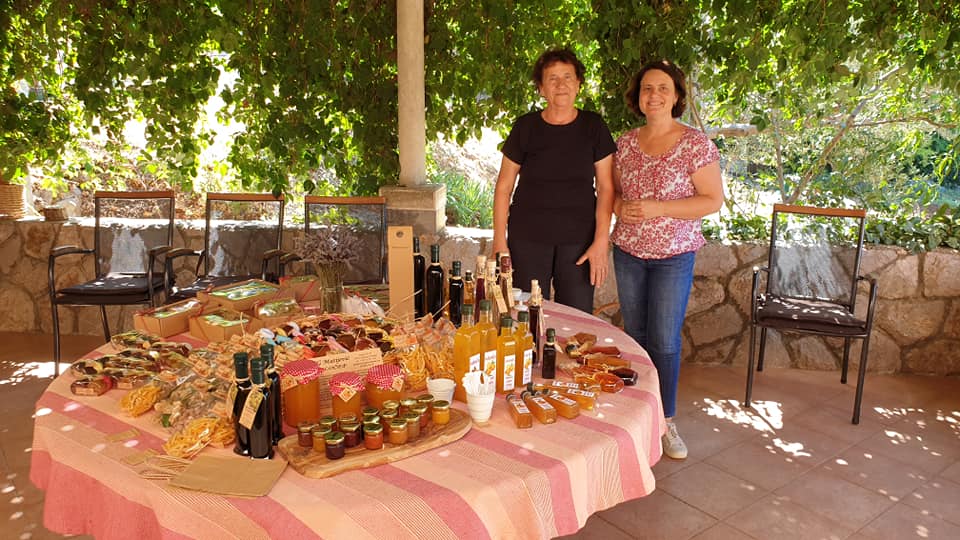
Tourism is about people, and there were plenty of personalities to behold, including these two lovely ladies who gave us an impressive tour of the fields where they are growing ingredients to produce this magnificent array of natural (and very healthy) Kalamota products for tourists.
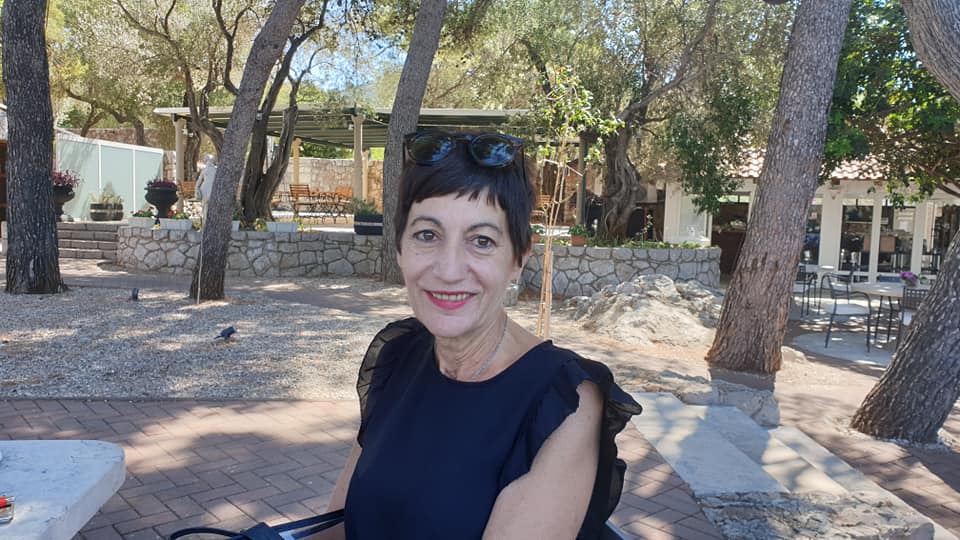
Talking of people, it was great to meet the teacher at the school on the island a couple of years ago. For an island with such a small population so close to the city, I was beyond impressed at the infrastructure and community. The full-time community of around 120 people has a school (with just two pupils), a resident doctor with his own surgery, and a fire station.
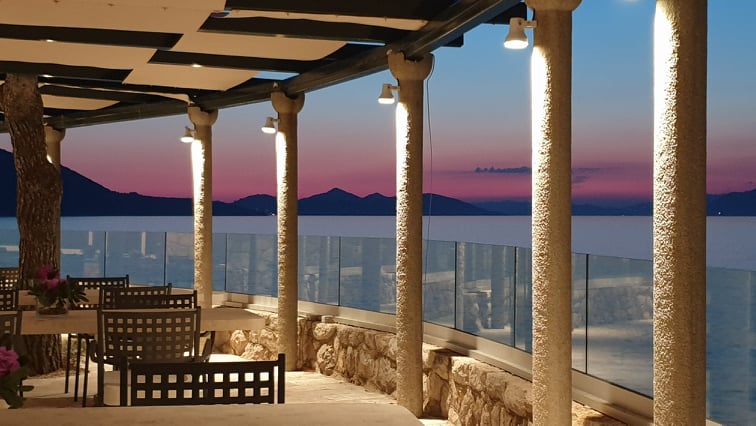
And weddings. Although a little off the beaten track perhaps, Kalamota is a great secret venue for weddings, with Villa Ruza the preferred destination. And with sunset views like that, are you surprised? In 2019, Villa Ruza hosted no less than 57 foreign weddings.
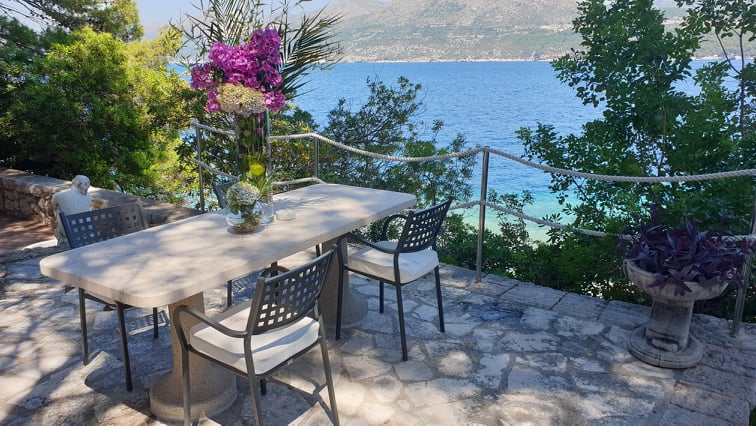
It is also a very popular restaurant for day-trippers, as well as Dubrovnik locals looking for a quality lunch away from the crowds. Dubrovnik, a 2-day destination which just has the old town?!? A perfect change of pace.
Timeless. The only sound coming from the sea and the trees, the main activity watching the Jadrolinija ferry glide gracefully back and forth between the Elaphite islands and Dubrovnik. Always on time, the ferry has become a timekeeping point of reference for locals.
The food was excellent, and don't miss this culinary piece of art if you like your fish with a little salt (order in advance). A sea-bream of 2 kilos, wrapped and baked in no less than THREE kilos of salt and egg white, then baked before being set on fire for show.
Some dining options from the Total Croatia Elaphite Islands in a Page guide:
Even though Kolocep Island is quite small, there are a few nice restaurants in both Gornje Celo and Donje Celo villages. In fact, Vila Ruza (Rose) in Donje Celo is hailed as one of the nicest restaurants in the Dubrovnik area. Its setting and beautiful terrace are reasons enough to visit. When you add to that great food and service you quickly understand why Villa Ruza is one place attracting guests from Dubrovnik year after year. In Gronje Celo, restaurant G Chelo belonging to Kalamota Beach House Hotel is a recent addition to the island’s dining scene. It features a lovely seating area and an imaginative menu. On the other side of the bay, Konoba Skerac is the local’s favourite.
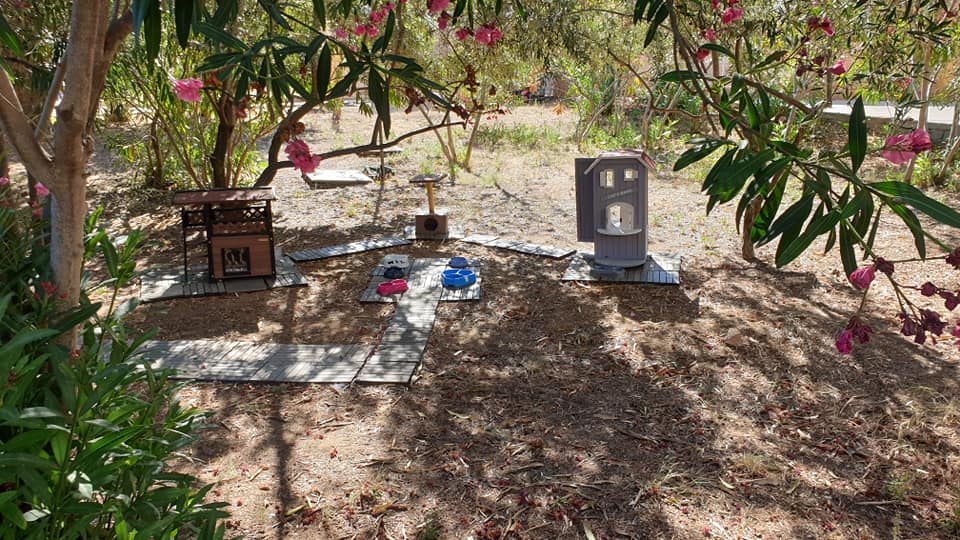
There is even a cat hotel...
Most visitors to Kalamota come for one thing only, stay for less than an hour, and then move on. For Kalamota's most famous for its Blue Cave, perhaps not as well known as its namesake on Bisevo, close to the island of Vis, but very much a must-do on the various island tours sold in Dubrovnik.
The Kolocep version is a small cave on the southwestern part of the island accessible by boat. Its name comes from the blue shade of the waters inside. You enter the cave by swimming or diving. It is wide enough to enter without difficulty, but the opening of it is only barely showing from the outside. It is an extremely popular stop for chartered boats and worth visiting for the ride to it as well.
Dubrovnik beyond the walls, a new way to look at the Pearl of the Adriatic. And with so many different options available, tailor your Dubrovnik experience to your specific needs.
To learn more about the Beyond the Dubrovnik Walls series, follow the dedicated section.
Locals Fight against Dubrovnik Museums to Keep Cat Anastazija at Rector's Palace (VIDEO)
March 31, 2022 - Dubrovnik locals are fighting to keep its most famous cat Anastazija at the central Rector's Palace, which she calls home. Dubrovnik Museums, however, have not welcomed the idea.
A tame tricolor 18-yeat old cat named Anastazija became famous far beyond Dubrovnik city limits this week. Not only is she popular amongst Dubrovnik locals, but they've constructed a small house for her on a step of the Rector's Palace, which she calls home, reports Dubrovacki Vjesnik.
The extraordinary gesture by locals was not welcomed by the Dubrovnik Museums, which has evicted Anastazija from the Rector's Palace.
And this is not the first time.
Namely, in May last year, Anastazija was evicted for the first time. The museum moved an improvised wooden house from the Palace, where she was resting during the pandemic. The then director of the Dubrovnik Museums, today the head of the City of Dubrovnik for Culture, Julijana Antić Brautović, said then that the cat house was not intended for year-round use.
"In the winter months, there are not many people or tourists in the City, so the house does not bother anyone. However, it is already warm, the season is starting a bit, the Dubrovnik Symphony Orchestra has concerts there, and it is not appropriate to have a house in front of the entrance to the Palace. That is why I told Nikša ('Nikša Rudelić' Rudela) to remove her, and if she needs to be somewhere, she can be moved to Porat. When it gets cold again, and the crowds subside, we will return the house, as agreed. Now that we are expecting concerts, exhibitions, book presentations, and other events, the view of the Palace with a cat house simply does not work," Antić Brautović responded to the calls from residents who were committed to keeping Anastazija in the same place.
"She is very old and needs all possible care; she cannot remain homeless. In museums in Moscow, cats are pets; they are advertised as an attraction; at the Hagia Sophia in Istanbul, foreigners are photographed with cats. Yet, in our country, they are unannouncedly evicted," citizens protested at the time.
Less than a year later, Srđan Kera, known as one of the champions of the Nazbilj Association, built a new accommodation for Anastazija with motifs of the Rector's Palace and placed it in the same location on Monday, inviting Dubrovnik citizens to celebrate Anastazija's new home together. However, a day later, Dubrovnik Museums again asked him to remove his work.
"The opinion of the Dubrovnik Museums is still the same. The cat house has no place in front of the Rector's Palace, be it a cardboard box or a stylized dwelling. We emphasize that no one has anything against the cats that stay here for many years and which until recently had no housing," said the museum and refrained from responding to calls.
Kera said that if he has to pay a fine for placing the house in a 'forbidden' place, he is ready to pay the fine. Building this house took 21 days.
"I disagree with the decision of the Dubrovnik Museums because sometimes the opinion should be changed. It's easy to float; you need to swim a little. This story could have been used differently to show sensitivity to animals because it is about a cat who, interestingly, chose this area. You can take away her house and cardboard; she will always come here. It could have been a trademark of this locality because cats used to be on ships of the Republic of Dubrovnik for many reasons," Kera pointed out.
"If they had respect, why shouldn't we?" he asked himself and repeated that Anastazija was only one cat and that if there were 70, he too would protest.
Due to their decision, Kera was forced to remove the house to an unknown location, reports Index.hr. In the meantime, the architect wrote a heartbreaking letter on behalf of Anastazija.
"To you who have decided my fate: I am tired of these five years of torture around my stay, which I chose on the cold stone steps and the walls of the Rector's Palace, cardboard and boxes that you picked up and left. I got tired of the whispering that I was a nuisance to you, and just when I got a real warm home, dreaming that I would spend this little time left in love and peace, today, like thieves in the night, in silence, they threw me out of my home in vain and removed it.
It's winter, I'm cold, and it's starting to rain. That's what the sky is crying about. Why do you hate me? I heard that you ordered your minions to remove my house, so when anyone saw me and could see that I was lost, they set a box up for me out of pity for me. Don't take me far.
Will I find a way to return to my city? Don't even poison me. I don't deserve to be humiliated and in pain as an old woman.
Put me to sleep. You will get what you have always wanted. My home is gone, and I will be gone. All that will be left is the memory that you killed love with hatred."
This February, when Anastazija temporarily disappeared, the locals launched a search for her and contacted the municipal police through the Animal Friends Association, warning of the importance of proper treatment of the animal. Fortunately, Anastazija spontaneously showed up on her own. Nevertheless, Anastazija's fans warn that anyone who tries to take her away can count on an appropriate reaction.
For more, check out our dedicated lifestyle section.
Niche Tourism: From Nissan Micra to Rimac Nevera, Dubrovnik, Car Launch Hotspot
March 29, 2022 - Where does one go to launch a new model of car? A look at Dubrovnik niche tourism - the car launch.
A few years ago, on my way down to Albania, I once again passed the Sun Gardens Dubrovnik resort, one of the flagship resort developments on the Croatian coast. As I was (unusually) ahead of schedule, I decided to pop in for a coffee and finally take a look at one of Dalmatia's leading hotel resorts.
I didn't get far, for the hotel was closed for a private event, and there were Nissan Micras EVERYWHERE.
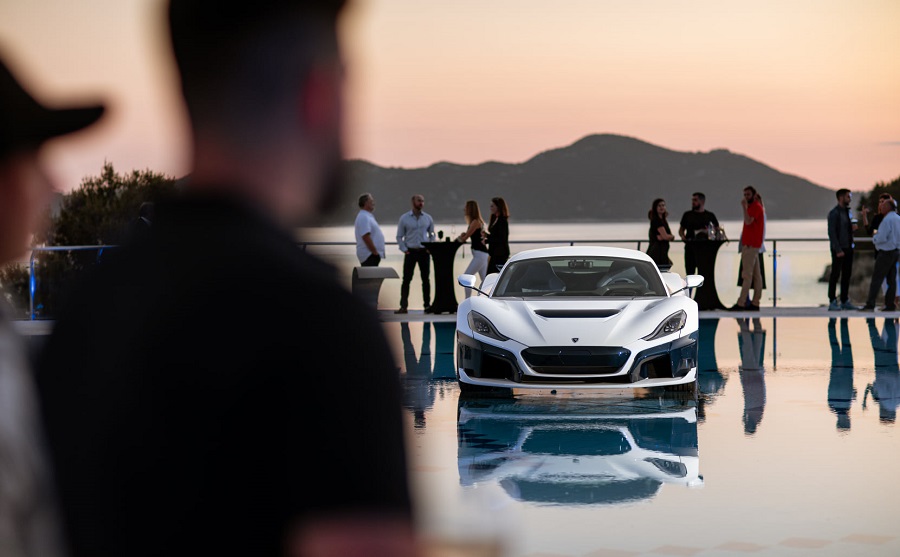
It turns out that I had stumbled on the global presentation of the new Nissan Micra, and Sun Gardens Dubrovnik had been chosen for the venue. Apart from all the great PR and gorgeous shots for the destination, the launch brought more than 7,000 people to Dubrovnik from January to mid-March. These included Nissan hosting over 500 journalists from all over the world as part of the new Micra model presentation, as well as internal trainings for staff and car dealers.
A nice business and a great promotion.
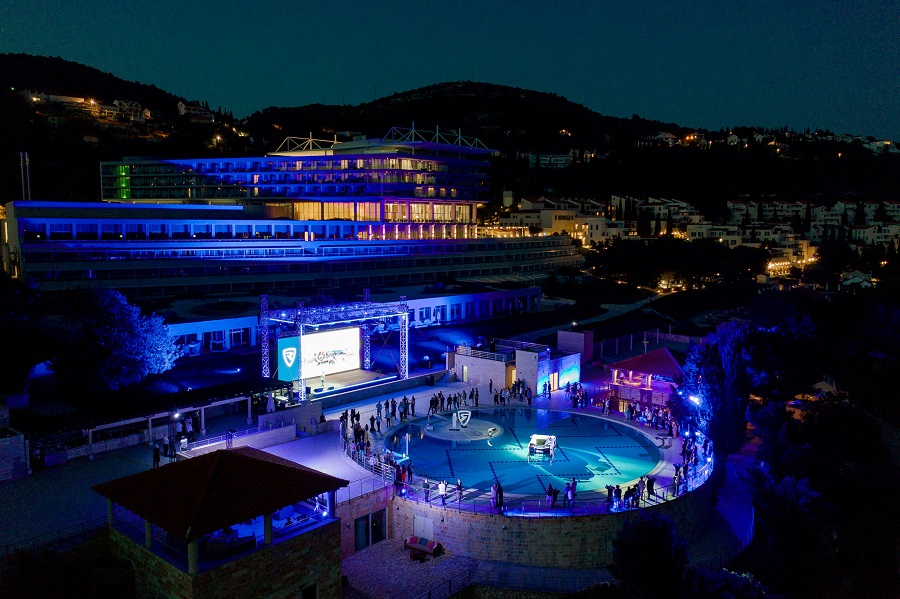
Then five years later came the unveiling of the fastest car of them all - the Rimac Nevera. It was a spectacular event, which included cars being winched by helicopter to a castle in the historic old town, but a large part of the launch of the Pride of Croatia took place at Sun Gardens Dubrovnik, as these photos from the resort's Facebook show.
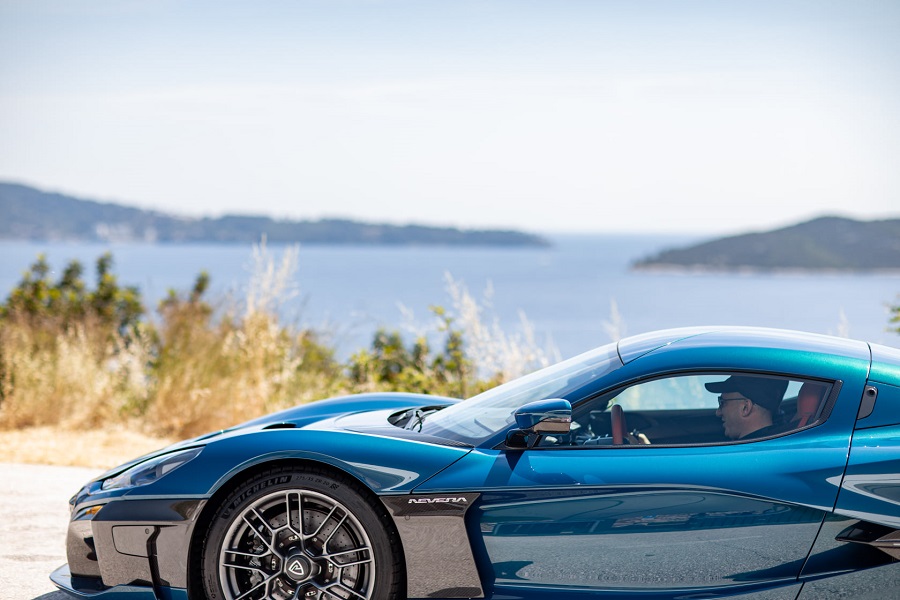
The Rimac Dealers Sales Conference gathered distributors and buyers, hosted test drives, and officially presented the new Rimac Nevera hypercar in early June, 2021. How nice that Rimac could find a location in Croatia fitting for the unveiling of such a global phenomenon.
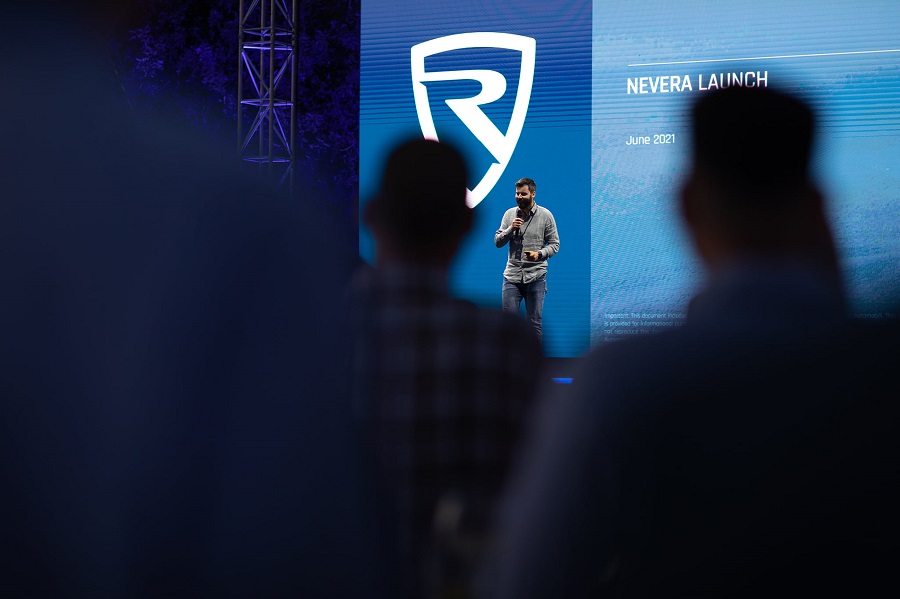
I had never considered the joys of car launch 'tourism' before, but the spin-offs and PR must be significant. And when I finally did get to tour Sun Gardens for the first time a couple of years ago, it was easy to understand why the resort is such an appealing option, quite apart form the magnificent views and 5-star service.
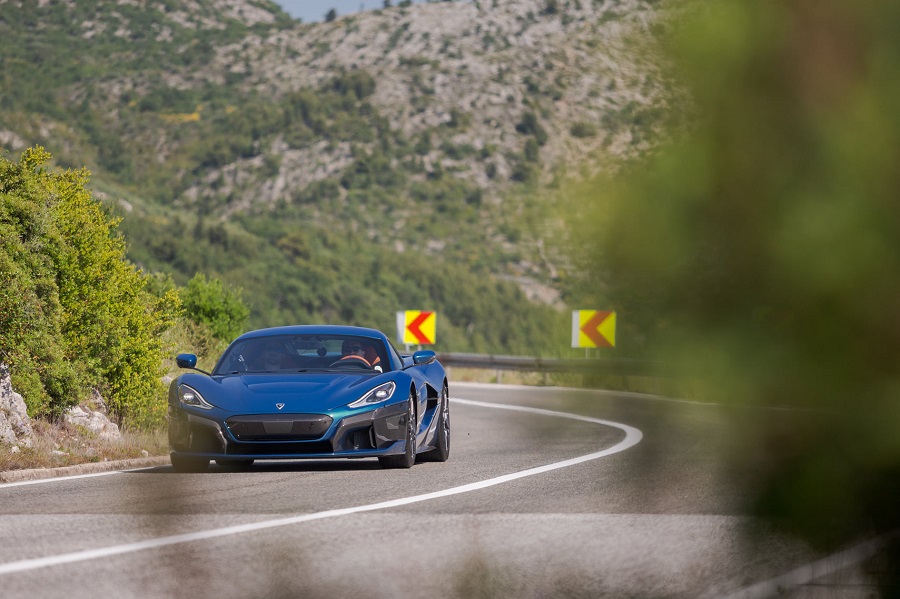
A little research on the official website gave some additional clues as to the resort's appeal:
"The resort is car accessible and offers many great locations for vehicle displays and photo shoots. It features 200 outdoor parking spaces that can be reserved for the event, together with 200 indoor garage spaces.

"The event spaces and the 753 sqm main ballroom are car accessible, while 16 bars & restaurants within the resort provide ample choice of venues for group functions such as lunches, dinners, and press conferences. Most can be transformed into workshops. Car maintenance and washing areas are available at the resort."
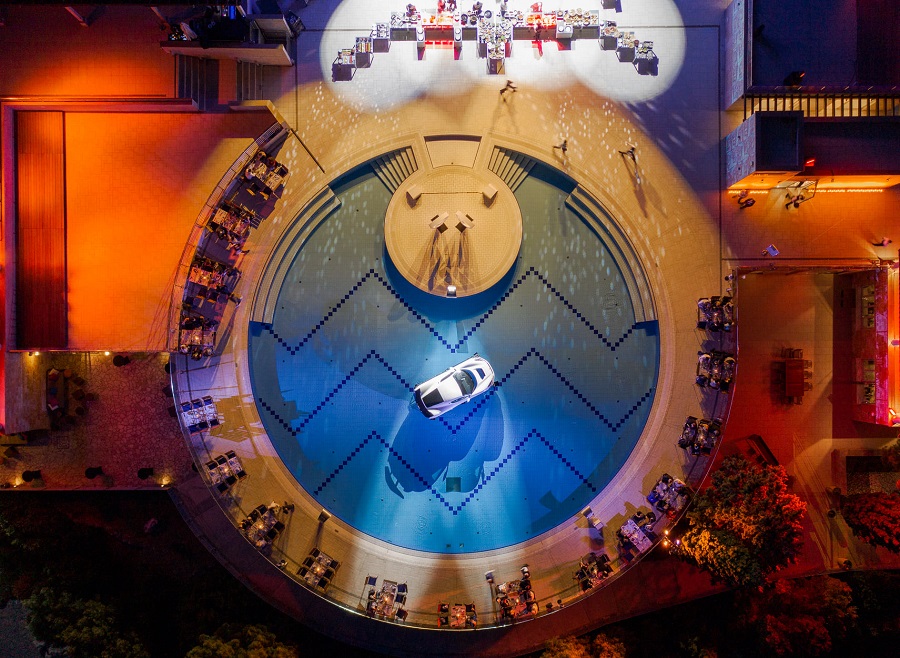
And not only that. With an impressive 4 km of roads within the resort and a petrol station a kilometre away, there is plenty of scope to take a car for a spin on site, and a Tesla destination charger is an additional appeal for those of electric persuasion (and the Nikola Tesla EV Rally included Sun Gardens on the quietest rally in the world in 2019).

Move outside the resort, and the options become magnificent. The coastal road is (especially out of season) not busy, with several stretches to step on the gas to test performance. And if you are looking to entertain a client, the backdrop of Dubrovnik and its environs is enticing indeed - from the magnificent old town to the wine roads of Peljesac to the famed oysters of Mali Ston.
And Dubrovnik has something of a track record in the car launch industry, it seems. A little further digging shows that Sun Gardens has rather an impressive CV in this field.
Sun Gardens Dubrovnik has hosted several other major automotive events thus far, including the three-month global Mercedes event “Mercedes Benz – Global Training Experience 2016” for 12,000 delegates, Bentley distributor convention, Hyundai CIS & Eastern European Dealers Convention, and Škoda European Sales Training in 2019.
Interestingly, these events are held out of the main season when capacity is higher. That is one of the things I enjoy about Croatian tourism. On the surface, to many Dubrovnik is just the old town, worth a visit for a couple of days only. Dig a little deeper, and the layers of diversity are fascinating indeed.
To learn more about the Pearl of the Adriatic, check out the Total Croatia Dubrovnik guide.


